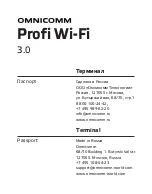
INTERFACES
26 | EN
5.1.2 ISDU parameters
More precise information regarding the system status can also be retrieved using the acyclical
communication channel (or ISDU parameters).
Within the framework of the ISDU channel, all of the settings (e.g. control thresholds, switching points,
permitted leakage, and so on) for the SCTMi are read or overwritten. More detailed information about
the identity of the SCTMi, such as the part number and serial number, can be retrieved via IO-Link.
The SCTMi also provides memory for user-specific information, which means that, for example, it is
possible to save an installation or storage site.
The exact meaning of the data and functions is described in more detail below in the “Description of
functions” chapter. You can find a detailed diagram of the process data in the data dictionary and
IODD.
5.1.3 Configuration server
Since revision 1.1, the IO-Link protocol has contained an automated process for transferring data
when a device is replaced. For this data storage mechanism, the IO-Link master mirrors all setting
parameters for the device in a separate non-volatile memory. When a device is swapped for a new
one of the same type, the setting parameters for the old device are automatically saved in the new
device by the master.
For this to work with the SCTMi, it must be operated on a master with IO-Link revision 1.1 or higher
and the data storage feature must be activated in the configuration of the IO-Link port.
A detailed description of the data storage mechanism cannot be provided here; however, note the
following practical information:
To ensure that data is transferred in the correct direction when a device is replaced, it must be
ensured that the new device is restored to the factory settings before it is connected to the IO-
Link master. This can be done at any time using the function for restoring the factory settings,
for example, via the operating menu.
The device parameters are automatically mirrored in the master when the device is configured
using an IO-Link configuration tool.
Changes to the parameters made in the user menu on the device or via NFC are automatically
mirrored in the master.
Changes to the parameters made by a PLC program using a function module are
not
automatically mirrored in the master. In this case, mirroring can be triggered manually by
executing ISDU write access to the “System Command” parameter (index 2) with the
“ParamDownloadStore” command (numerical value 5) once all the required parameters have
been changed.
The parameterization server function of the IO-Link master should be used to ensure that no
data is lost when switching the bus module.
















































